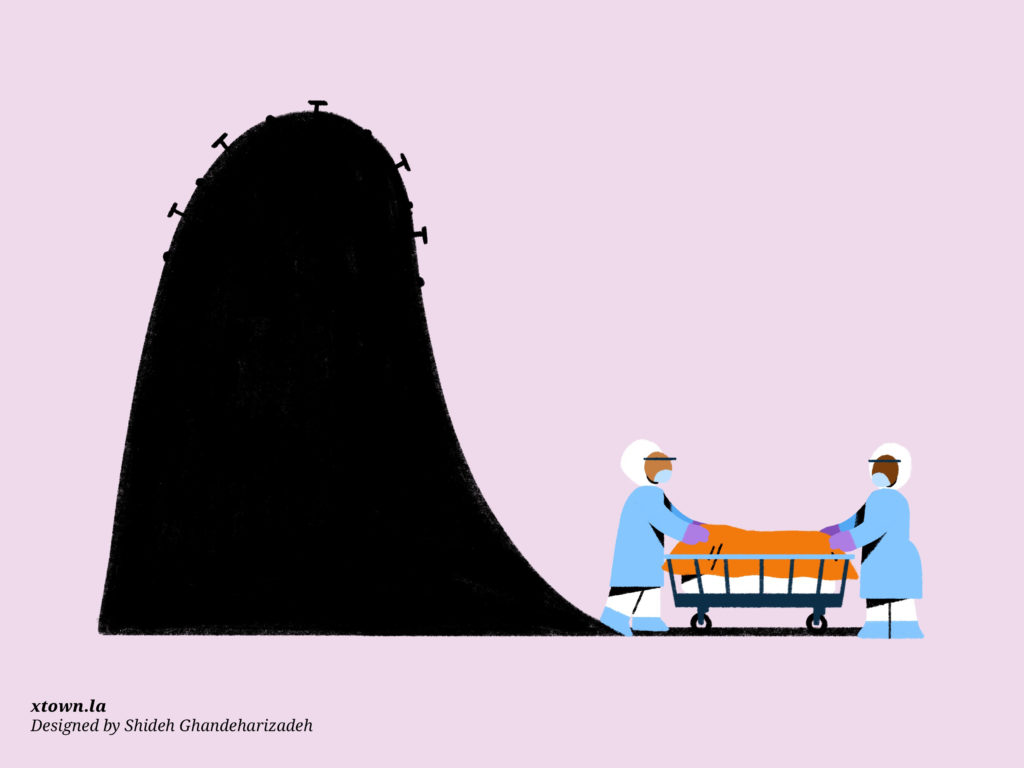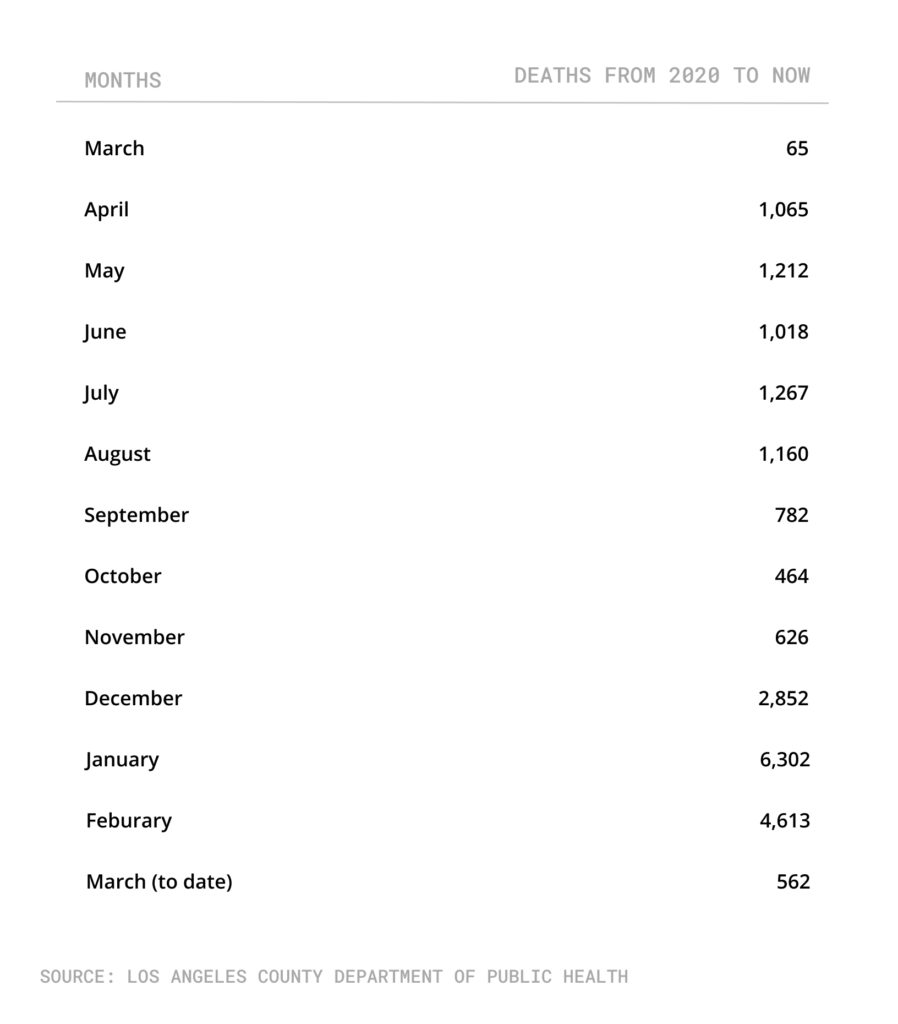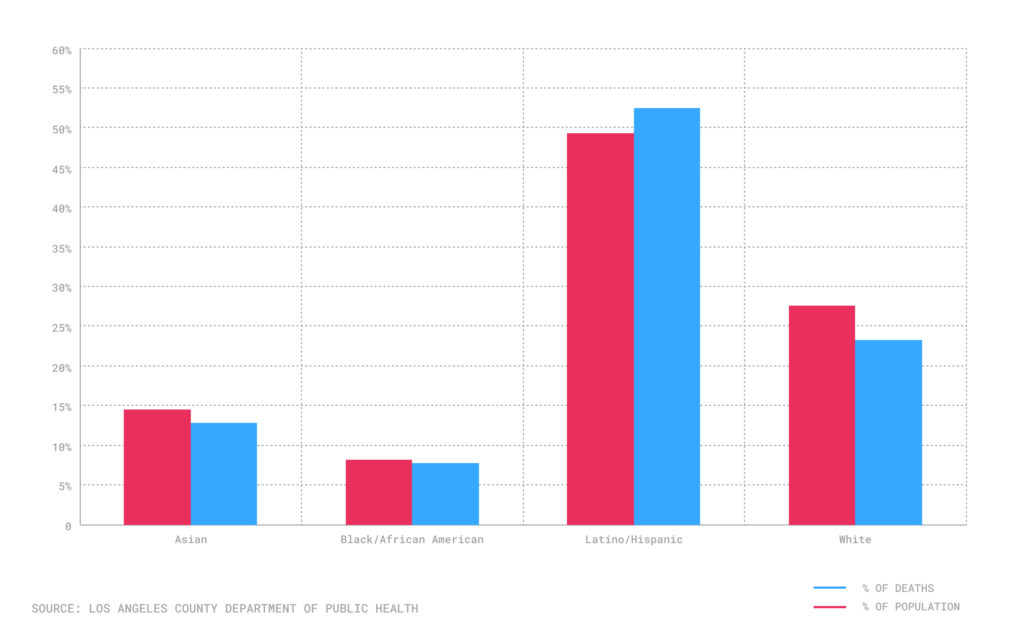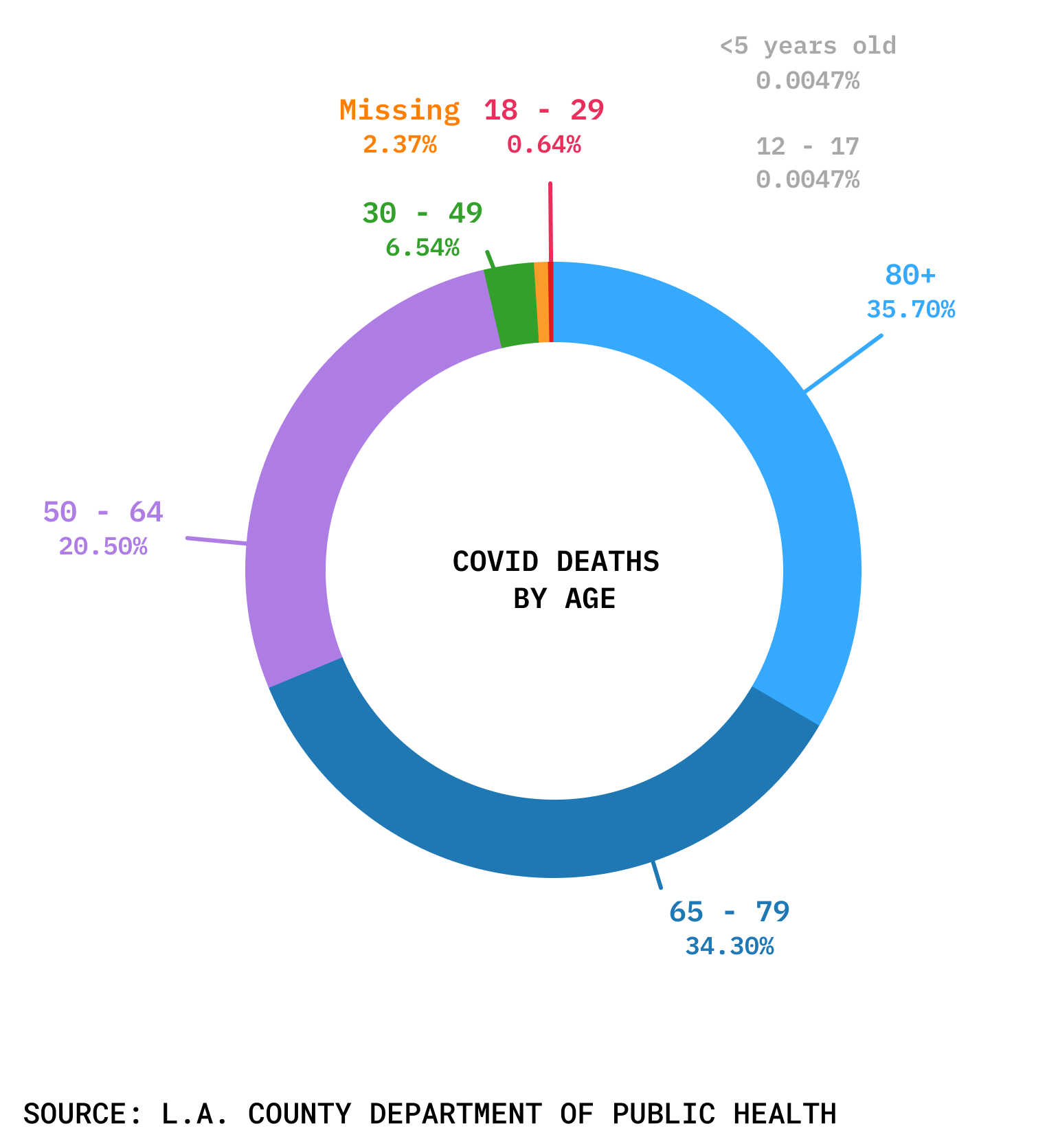A portrait of 22,000 deaths

COVID-19 has taken so much from Los Angeles in the year since it arrived: jobs, social interaction, a sense of normalcy.
But never did it take more than in the period from December to February: In those three months, 13,767 people died of complications related to COVID-19, according to data provided by the Los Angeles County Department of Public Health. That accounts for nearly 63% of the 22,029 people who had died through March 7.
“We couldn’t have imagined the crushing toll [COVID-19] would take on our cities,” Mayor Eric Garcetti said during his March 4 evening briefing, reflecting on the one-year anniversary of when he declared a local emergency in Los Angeles. “We couldn’t predict it would be the first day of the hardest year of our lives.”
One reason the winter surge was so jarring was that it followed a period in which deaths had been falling. After bouncing between 1,018 and 1,267 deaths per month from April through August, social distancing and mask wearing had led to a drop in fatalities; the nadir occurred in October, when just 464 people in the county died from COVID-19.
COVID-19 Deaths in Los Angeles County by Month

That changed due to a combination of people gathering over the winter holidays, colder weather that prompted more indoor gatherings, and likely the arrival of a more contagious California coronavirus variant. The 2,852 December deaths represented a more than 350% increase from the 626 deaths in November. The January apex of 6,302 deaths was more than twice that of December.
That is not the only way in which COVID-19 has had an outsized impact. Although women slightly outnumber men in Los Angeles County, it is men who account for 58.8% of the fallen, versus 41.2% for women.

Nor has there been an equal distribution when it comes to ethnicity. Although Latinos make up approximately 47.6% of the county population, they account for 52.4% of the deaths, according to Garcetti’s coronavirus data portal.
The disproportionate impact has been attributed to higher infection rates in poorer, densely packed communities with a heavy Latino population, as well as the number of Latinos who work in essential-service sectors. The higher rate of cases and deaths for Latinos has prompted health and political leaders to speed up vaccinations in hard-hit communities of color.
Los Angeles COVID-19 Deaths by Ethnicity, Compared to Population

Although the winter surge and the overrun hospitals temporarily made Los Angeles the epicenter of the pandemic, many regions across the country have been hit harder. Los Angeles County has an overall death rate of 219 per 100,000 residents, according to Garcetti’s Innovation Office, based on data supplied by the County Department of Public Health and Johns Hopkins University. That ranks 78th out of 584 counties with more than 100,000 residents.
By comparison, The Bronx, New York, has seen about 420 deaths per 100,000 residents, with 5,955 total deaths. Queens, New York, has a death rate of 396 per 100,000 inhabitants, and 8,926 total deaths.
One consistent factor with COVID-19 has been its deadly toll on senior citizens. Although people who are 65 or older comprise only about 13.2% of the county population, and represent approximately 10% of the 1.2 million confirmed cases, they account for 70% of deaths, according to Department of Public Health figures.
More than 7,100 people between the ages of 65-79 have died from COVID-19. Nearly 7,500 who are 80 or older have died.

The disproportionate impact stems in part from the virus’ early spread through congregate care facilities such as nursing homes and assisted living complexes.
How we did it: We examined data from March 2020-March 7, 2021 provided by the Los Angeles County Department of Public Health and data documents produced by the office of Mayor Eric Garcetti. In some cases information may have changed from what was originally published.
Have a question? Email askus@xtown.la.






